Asian Group
Related: About this forumJapanese Shinto shrines
There are two main religions in Japan-- Shintoism and Buddhism. Most Japanese appear to have adopted both religions to some extent. Shintoism is a polytheistic religion for the here and now that is centered around shrines called "jinja" (神社 ) or "jingu" (神宮 ). Buddhist temples are mainly concerned with the Afterlife, and often contain the Japanese equivalent of churchyards.
Shintoism is an ancient religion dating back thousands of years. The "gods" who are believed to inhabit the grounds of Shinto shrines are often the equivalent of Christian saints. Shrines are often locations for community events. People also go to shrines to pray for good fortune in various endeavors, including love, work, and taking entrance exams. There are various sects of Shintoism, including the Inari, Hachiman, and Ise sects, and various shrines have gained a reputation for "specializing" in certain blessings, such as finding a good mate, expelling bad luck, and/or traveling safely.
Shrines come in various sizes, from small roadside altars to huge complexes. The larger ones can be particularly busy on New Year's, which is considered a holy day by many Japanese. People will line up at shrines with a particularly high reputation in order to receive blessings for the new year. They will also buy various types of talismans to attract good luck, at any time of the year. And for a fee, they can hire a Shinto priest to perform certain rites to help them achieve their goals.
The following are some pictures of Japanese shrines and associated facilities and talismans.
Mitsukaido Tenmangu Shrine, Joso City
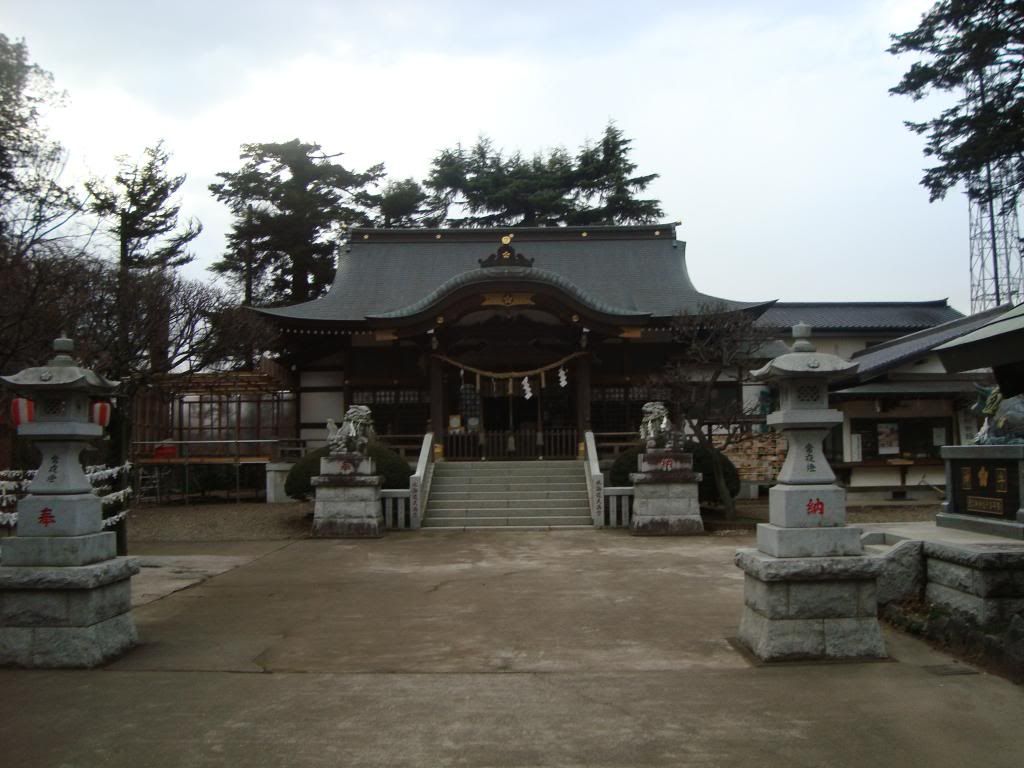
Entrance to the Mitsukaido Tenmangu Shrine. The stone structure is called a "torii" (鳥居 ). The lanterns leading up to the torii indicate that there is some sort of special event being held at the shrine.
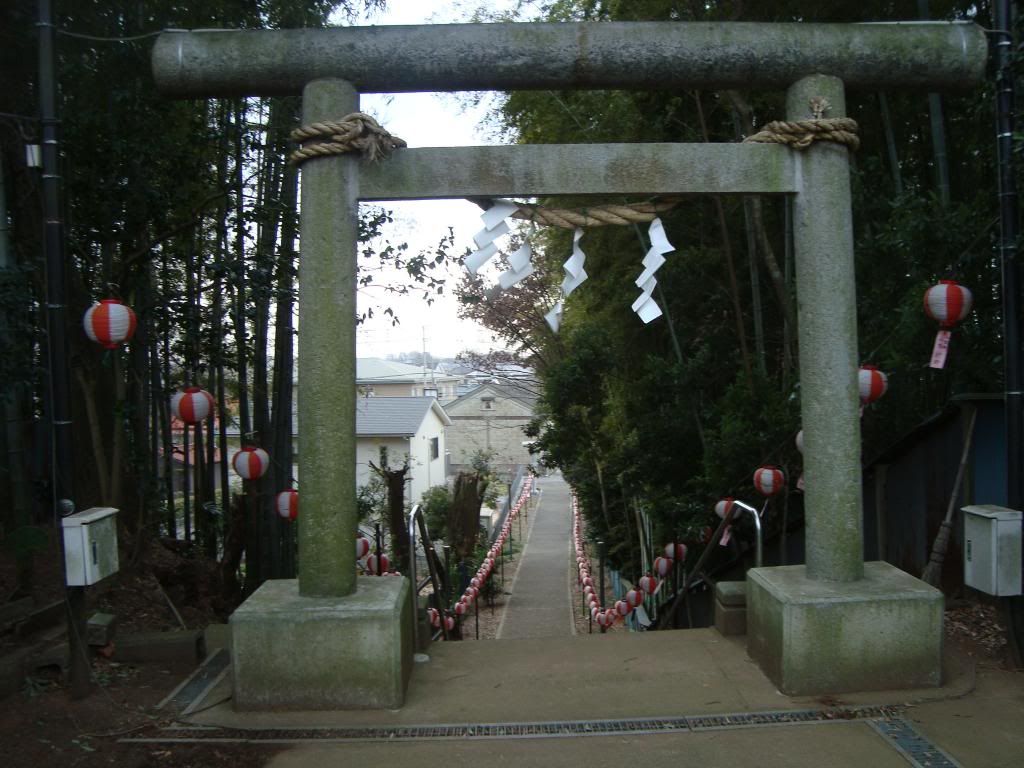
Mito Toshugu Shrine, Mito City
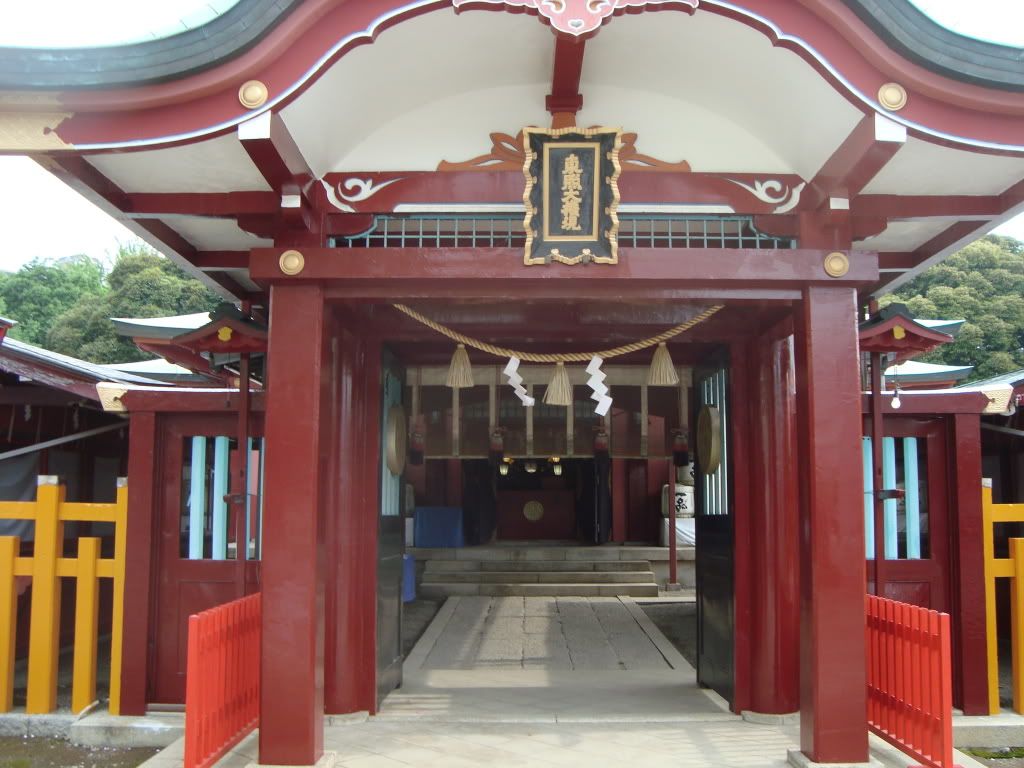
The parking lot below the shrine was damaged during the March 11, 2011 M9.0 earthquake, and several cars were partially buried when the retaining wall collapsed. Fortunately, no one was killed. One woman was trapped in her car for a while, but she was rescued by construction workers who were working nearby.
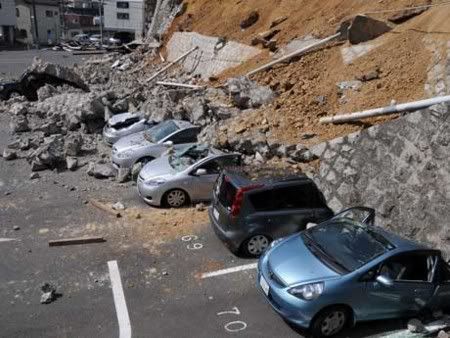
This is a community shrine of the Hachiman sect in Tsukuba Mirai City. Visitors who want to pray for something will throw a small coin (usually the Japanese equivalent of a dime) into a collection box, and follow a ritual for praying for good fortune.
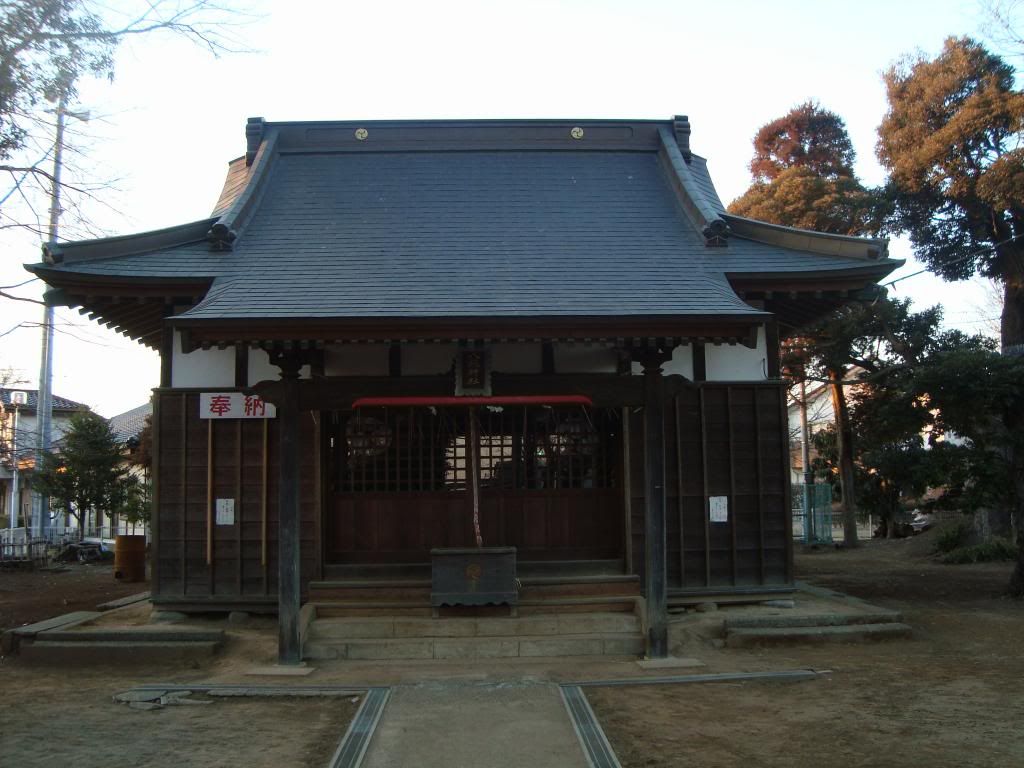
This is the inside of a shrine in the Shimbashi district of Tokyo.
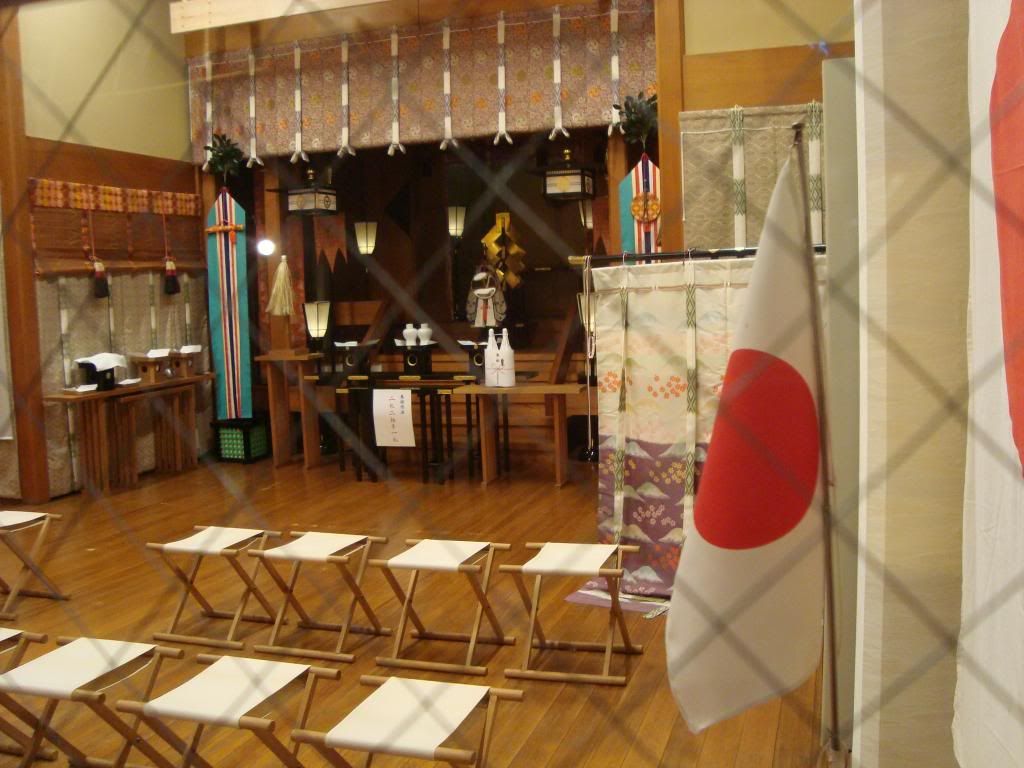
This is one of the 20 or so lanterns that are on the steps of the Yushima Tenjin Shrine in the Okachimachi district of Tokyo:
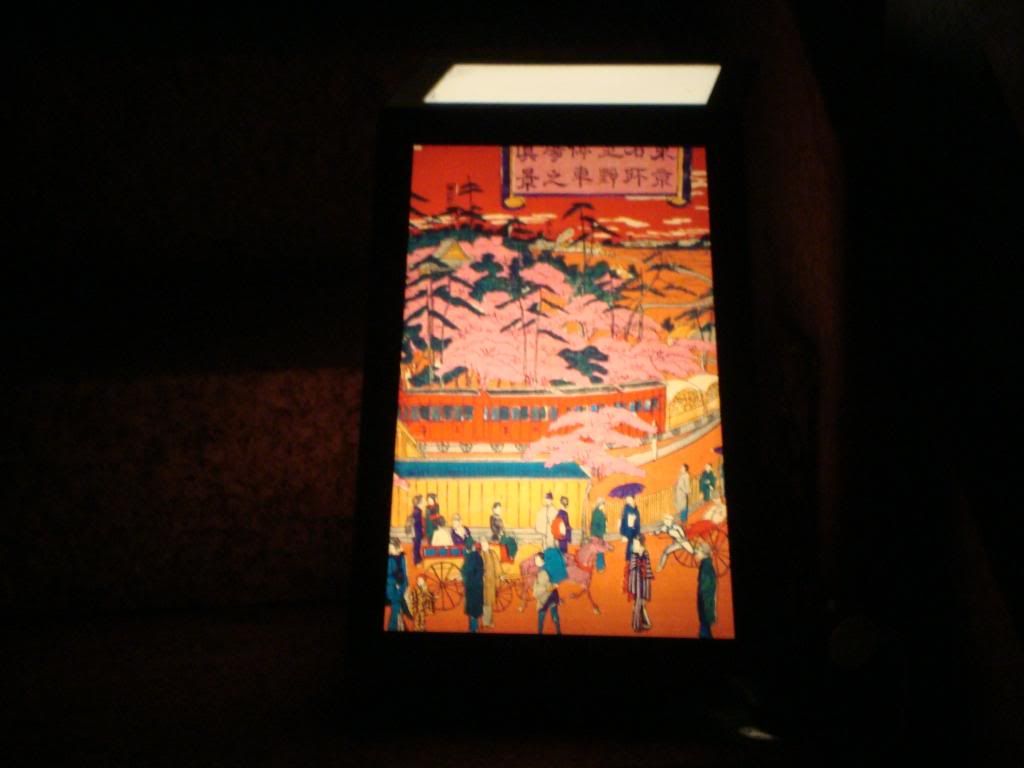
Here are a couple of talismans sold by shrines. On the left is a "Daruma" (ダルマ ) which is used for making a wish or two. On the right is a talisman called "yakuyoke mamori" (厄除守り ) that is supposed to expel bad luck.
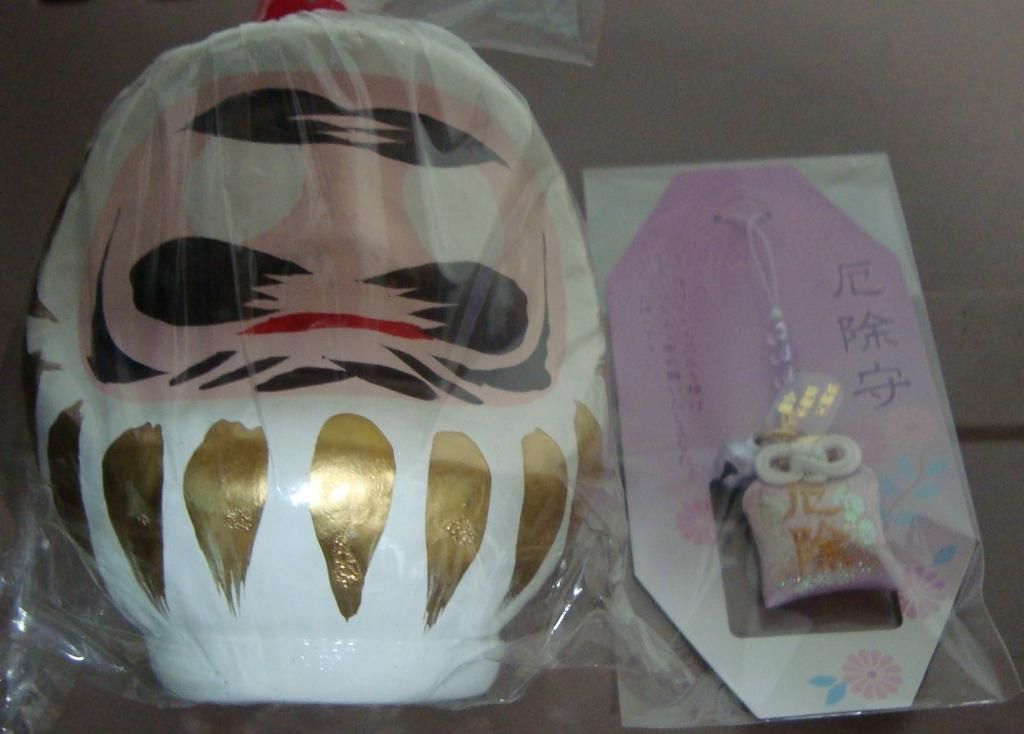
snappyturtle
(14,656 posts)Art_from_Ark
(27,247 posts)Lydia Leftcoast
(48,217 posts)only on the "porch," as when I was staying with a family on New Year's and tagged along to their midnight trip to the local shrine.
The Shimbashi one seems to have an unusually large interior.
To add to what Art said, traditionally, Japanese weddings were conducted by Shinto priests and funerals by Buddhist priests.
The most important shrine in Japan is the Great Shrine of Ise, south of Nagoya, which is the shrine of the imperial family. There are actually two sites right next to each other, and every 20 years, they knock down the building on one site and start using the building on the other site, so that even though the idea of having a shrine at Ise dates back over a thousand years, the actual buildings are never more than 20 years old.
Art_from_Ark
(27,247 posts)This is the Kanda Myoujin near Akihabara Electric Town:

yuiyoshida
(41,829 posts)Art_from_Ark
(27,247 posts)I was wondering when you were going to stop by ![]()
yuiyoshida
(41,829 posts)I been running around to the other spots, like GD and the Lounge. I forget sometimes that I used to mostly hang out here. This Group is home to me!
Art_from_Ark
(27,247 posts)Last edited Thu Feb 27, 2014, 11:07 AM - Edit history (2)
This is a statue of Daikokuten, one of the Shichi Fukujin (Seven Gods of Fortune)
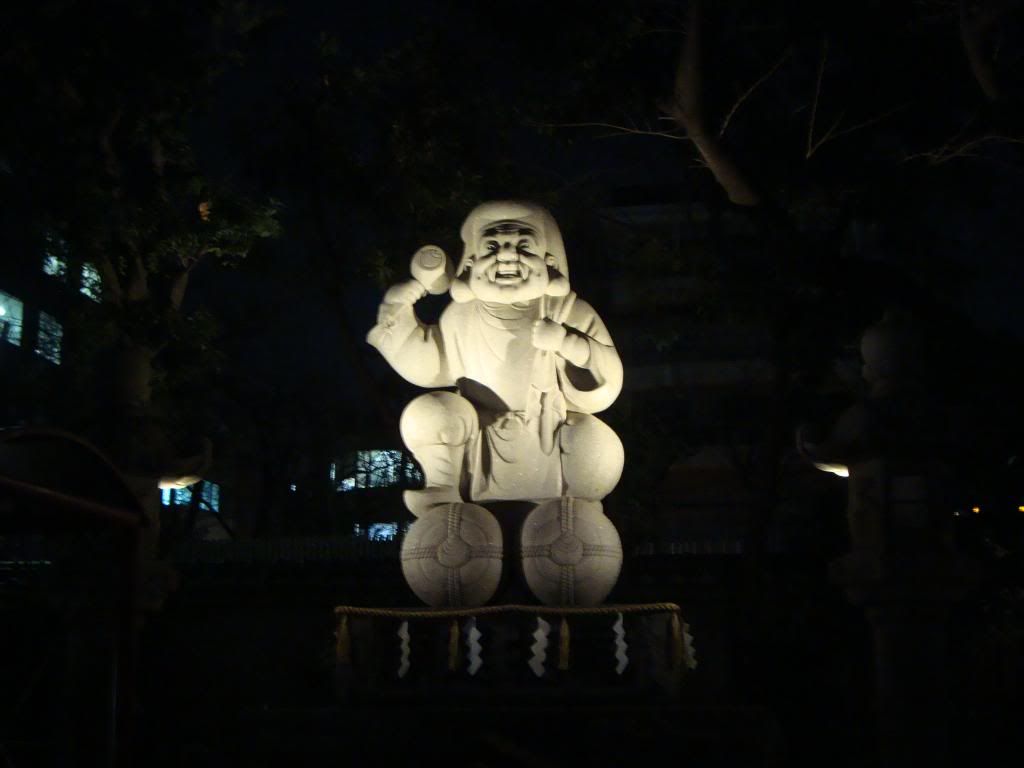
This is one of the main temples of the Kanda Myoujin complex
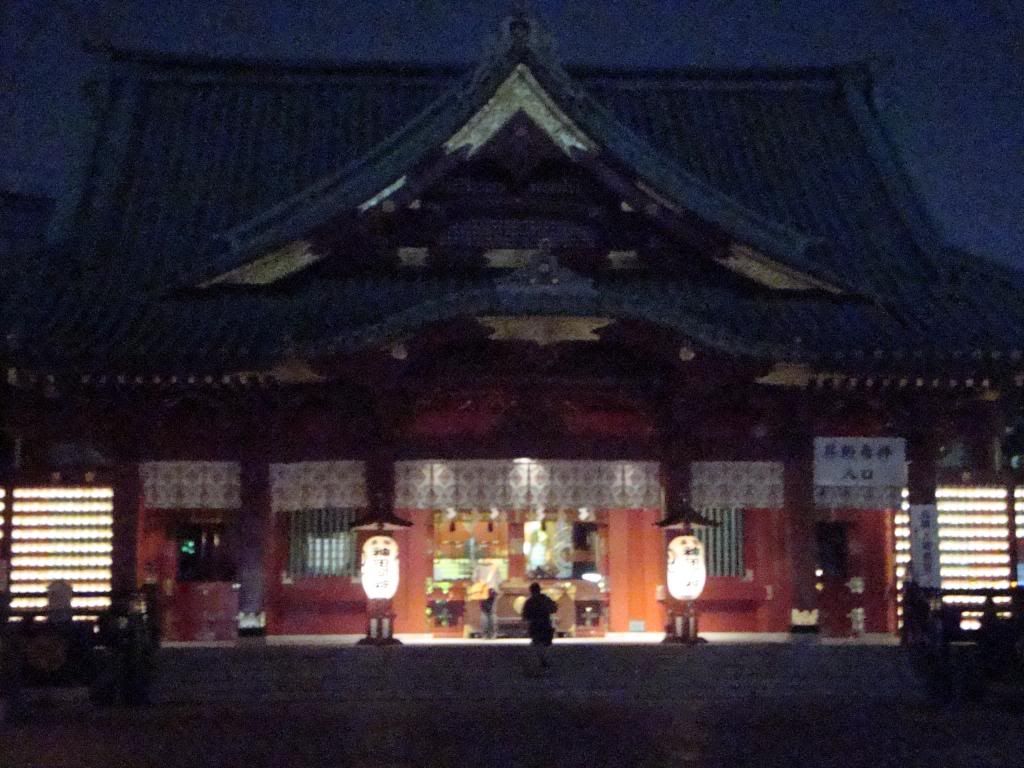
And this is a gold-plated "koban" token of Daikokuten from the shrine that is supposed to bring good luck and good fortune.
yuiyoshida
(41,829 posts)I would love to have one...!
Art_from_Ark
(27,247 posts)It looks nicer in person than it does in the picture. The other side shows Daikokuten, one of the Seven Gods of Fortune.